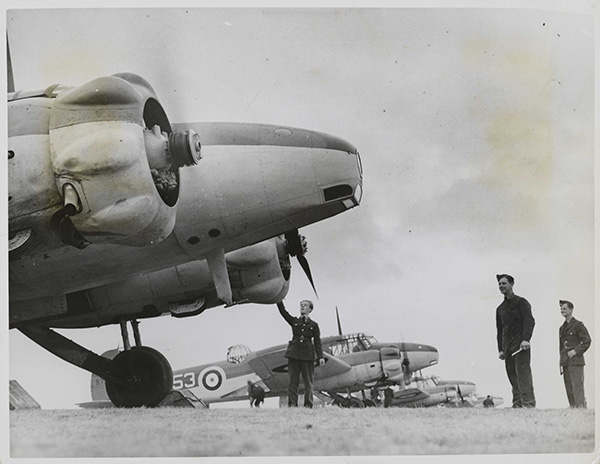Have you heard the name: Major Robert Smith-Barry? You probably would have if you were around during the First World War because long before the famous Red Bull slogan he gave people wings.
And now as the RAF’s Central Flying School approached its centenary year, Smith-Barry’s achievements have been honoured with a blue plaque in Gosport, Hampshire at the Alverbeck Hotel.
With his fresh and courageous approach to flying, plucky Pilot Smith-Barry revolutionised British flight training during World War One — increasing their chances of survival.
He wrote the first flying training manual and invented the Gosport Tube, which enabled the trainer and trainee to talk through a rubber tube without having to shout across the cockpit.
He was described him as: “the man who taught the air forces of the world to fly”, by the first Marshal of the Royal Air Force, Lord Trenchard.
Daring and inspirational
In 1912, the dynamic pilot first earned his wings on the first course held at Central Flying School, in Upavon, Wiltshire, now based at RAF Cranwell in Lincolnshire.
Smith-Barry knew how pilots should and could fly — and that was without fear. Personally, he loved delighting and frightening onlookers with incredible aerial antics, and he soon earned a reputation as a pilot who was not afraid to push himself and his plane to its limits.
During one early training flight, he pulled into a steep climb immediately after taking off.
“You mustn’t do that kind of thing,” his instructor said. Apparently Smith-Barry responded with only a quizzical look.
Smith-Barry knew a fresh approach to flying was needed and the figures back him up — of the 14,000 British pilots killed between 1914 and 1918, 8,000 died during training.
However, it wasn’t until later on in his career that the ambitious pilot got the chance to do what he so wanted to —revolutionise the way military pilots were trained.
According to Darren Arch, the current CFS wing commander, Allied pilots were not taught to fly an aircraft to its limits or recover from “difficult situations”.
“As a result, they flew well within the capabilities of the aircraft and themselves,” he said. “They became easy pickings for the opposition pilots.”
Pushing for changes
Concerned about the number of recruits being sent out to fight against highly trained German fighter squadrons, at one point during the Battle of the Somme, Smith-Barry refused to send replacement pilots over the frontline until they were more experienced.
“They have barely learned to fly, let alone fight,” he told Major General Hugh Trenchard.
Again the facts back him up, and during the four-and-a-half months of the infamous battle, the corps lost 499 airmen and 782 aeroplanes – a third of its total force.
As the Battle of the Somme progressed, Smith-Barry wrote a paper outlining his suggestions. General Trenchard was among the first to recognise the impact of Smith-Barry’s accomplishments — he read Smith-Barry’s proposals, and agreed to let him try out “these ideas you’ve been pestering me with”.
Posted back to England, Smith-Barry then took command of 1 (Reserve) Squadron at Gosport, in December 1916, where he set about putting his revolutionary training methods into practice like teaching sharp turns, spinning and recovery, and crosswind take-off and landings.
He wrote: “If the pupil considers this dangerous, let him find some other employment as, whatever risks I ask him to run here, he will have to run a hundred times when he gets to France.”
He insisted that as far as possible advanced pupils be allow to fly exactly as they chose – “their experiments limited only by the state of their own nerve”.
John Fletcher, curator of HMS Sultan Airfield and Engineering Museums, in Gosport, said prior to Smith-Barry’s intervention “everything was wrong with the system”.
“There were unqualified instructors, you had different aircraft on different days, different instructors on different days, and there was no communication between the instructor and the pupil,” he said.
Princes William and Harry are two notable recruits to benefit from a system which, according to the RAF, is “revered around the world”.
Major Robert Smith-Barry may have taught your military ancestor to fly or influenced their training…
Were any of your family members in the RFC or RAF?
Did you know that before the Royal Air Force (RAF) was formed, The Royal Flying Corps (RFC) was the air arm of the British Army during the First World War, until it merged with the Royal Naval Air Service on 1 April 1918 to form the RAF.
During the early part of the war, the RFC supported the British Army, by artillery co-operation and photographic reconnaissance. It developed and then led RFC pilots into aerial battles with German pilots and later in the war included the strafing of enemy infantry and emplacements, the bombing of German military airfields and later the strategic bombing of German industrial and transportation facilities.


